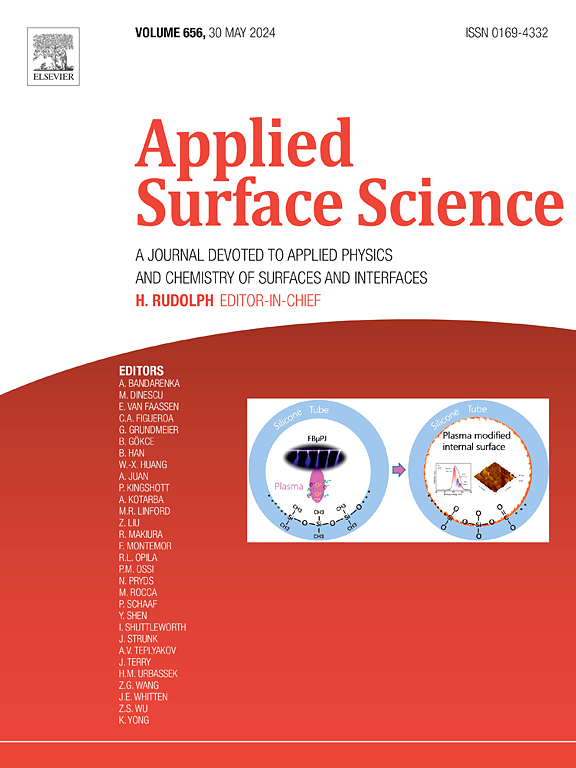Selective CO2 and CO electroreduction to C2–C7 hydrocarbons on Pd–Au electrodes: Role of interfacial impedance and CO adsorption modulation
IF 6.3
2区 材料科学
Q2 CHEMISTRY, PHYSICAL
引用次数: 0
Abstract
Electrochemical reduction of CO2 and CO was systematically studied using bare Pd and Au-modified Pd electrodes in KHCO3 and phosphate electrolytes to explore the impact of electrode composition and electrolyte environment on product selectivity and reaction kinetics. CO and H2 were the dominant gaseous products, with minor CH4 and C2+ hydrocarbons detected. Formate and methanol were observed only under CO2 conditions. Au incorporation into Pd significantly enhanced hydrocarbon formation—by more than 10 times—particularly in phosphate electrolyte, by weakening CO binding and promoting intermediate desorption. The use of phosphate electrolyte increased the C2+ Faradaic efficiency by over 8-fold compared to KHCO3. Anderson–Schulz–Flory analysis confirmed Fischer–Tropsch-like behavior up to C7 hydrocarbons, with alkenes showing higher chain growth probability than alkanes. Electrochemical impedance spectroscopy revealed that KHCO3 induces higher charge transfer and interfacial resistance, likely due to strong CO adsorption, whereas phosphate promotes more favorable interfacial kinetics. Au deposition further reduced interfacial resistance and modulated double-layer capacitance, depending on electrolyte pH and applied potential. Spectroscopic characterization confirmed that Au modified the electronic structure of Pd, stabilizing the active surface under reductive conditions. These findings highlight the synergistic effects of Au alloying and phosphate electrolytes in optimizing CO2/CO electroreduction toward long-chain hydrocarbon production.


钯金电极上CO2和CO选择性电还原为C2-C7碳氢化合物:界面阻抗和CO吸附调制的作用
系统研究了裸Pd和au修饰Pd电极在kco3和磷酸电解质中的电化学还原CO2和CO,探讨了电极组成和电解质环境对产物选择性和反应动力学的影响。CO和H2是主要的气态产物,少量的CH4和C2+碳氢化合物被检测到。甲酸盐和甲醇仅在CO2条件下被观察到。金与钯的掺入通过削弱CO结合和促进中间解吸,显著增强了碳氢化合物的形成,特别是在磷酸盐电解质中,其形成幅度超过10倍。磷酸盐电解质的使用使C2+法拉第效率比KHCO3提高了8倍以上。Anderson-Schulz-Flory分析证实了C7碳氢化合物的费托类行为,其中烯烃比烷烃表现出更高的链生长概率。电化学阻抗谱显示,kco3诱导了更高的电荷转移和界面阻力,这可能是由于对CO的强吸附,而磷酸盐促进了更有利的界面动力学。金沉积进一步降低了界面电阻和调制的双层电容,这取决于电解质的pH值和应用电位。光谱表征证实,Au修饰了Pd的电子结构,在还原条件下稳定了活性表面。这些发现强调了金合金和磷酸盐电解质在优化CO2/CO电还原生产长链烃方面的协同作用。
本文章由计算机程序翻译,如有差异,请以英文原文为准。
求助全文
约1分钟内获得全文
求助全文
来源期刊

Applied Surface Science
工程技术-材料科学:膜
CiteScore
12.50
自引率
7.50%
发文量
3393
审稿时长
67 days
期刊介绍:
Applied Surface Science covers topics contributing to a better understanding of surfaces, interfaces, nanostructures and their applications. The journal is concerned with scientific research on the atomic and molecular level of material properties determined with specific surface analytical techniques and/or computational methods, as well as the processing of such structures.
 求助内容:
求助内容: 应助结果提醒方式:
应助结果提醒方式:


